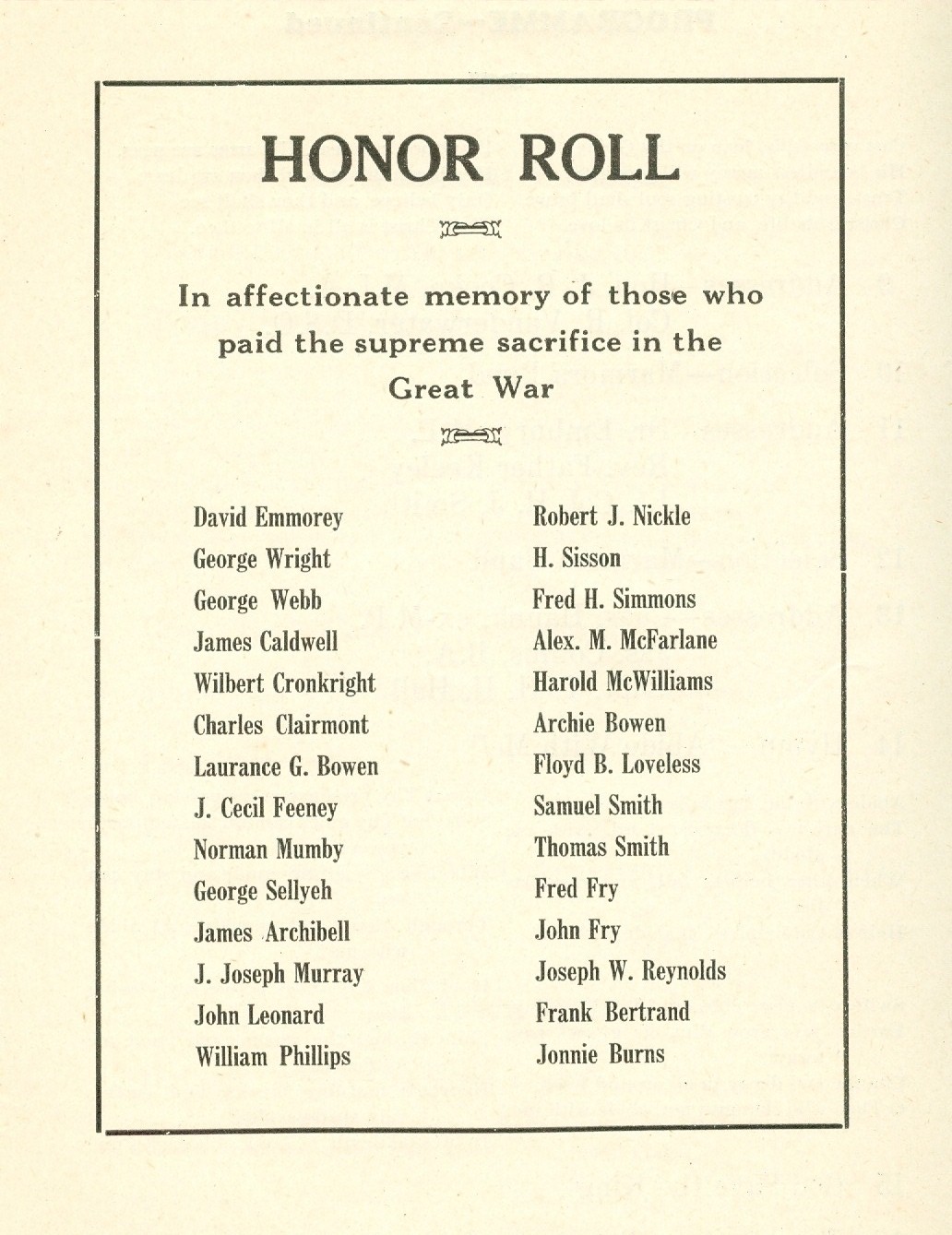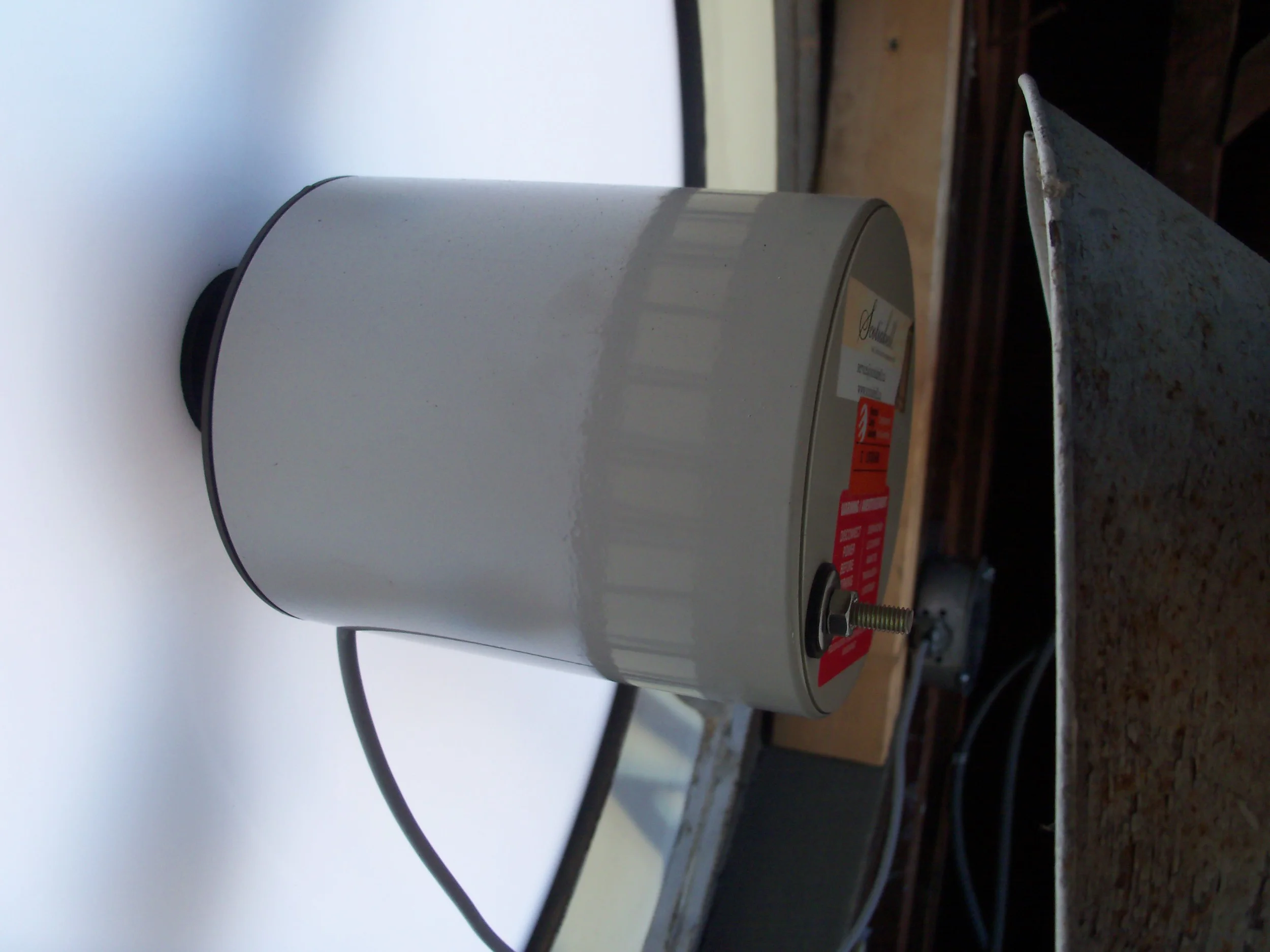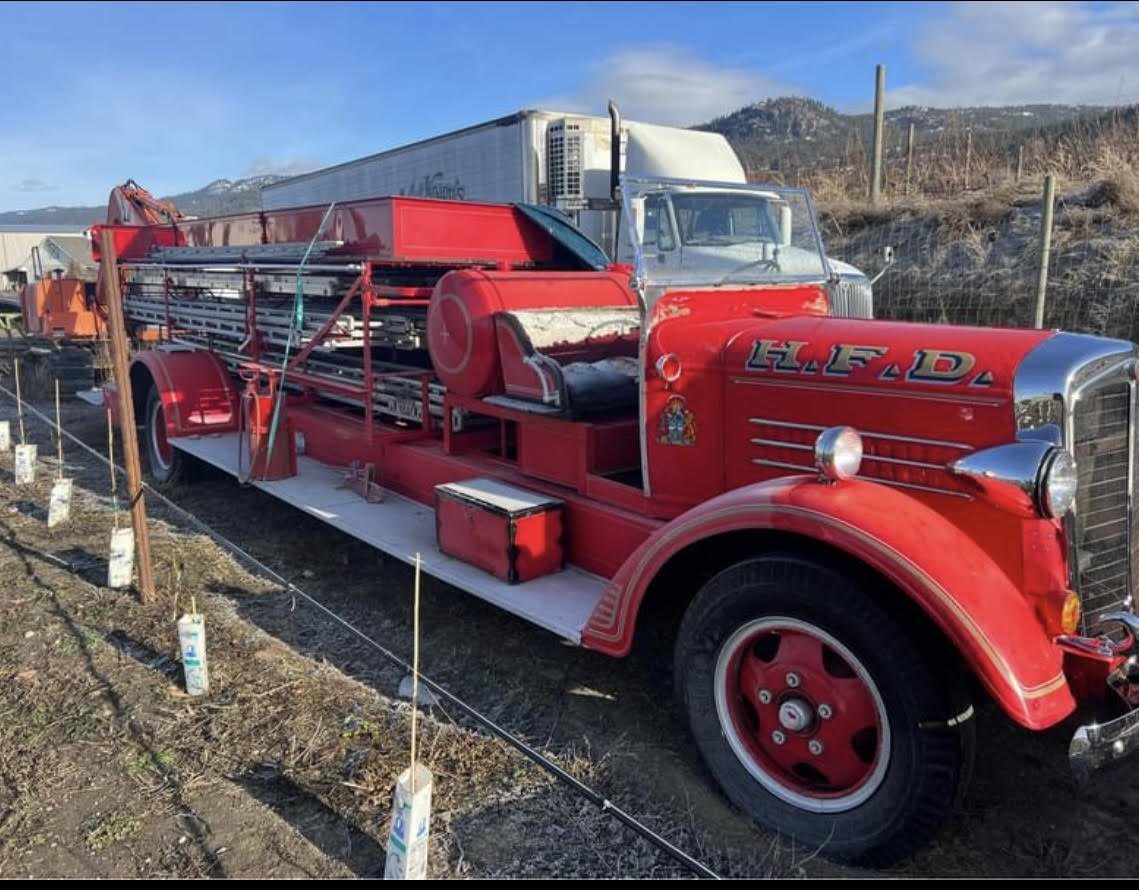35 Forsyth Street - THE MEMORIAL BUILDING
The Memorial Building was built in 1928 as a tribute to those from Marmora who fell in the First World War. The building was topped with a clock and bell tower, and was truly the heart of the Village. Over the years, it hosted the Post Office, Fire Hall, (you can see the doors on the right) meeting rooms and now library. In the basement was a small jail cell suited for one, now converted into a Food Bank facility. Recently (2015) the clocked stopped for good, but with the help of the Marmora Crowe Valley Lions and Leo Provost, a new clock was installed for a total of $21,000.00.
Prior to 1928, the corner was taken up by a small wooden building housing the Langdon Butcher shop run by Dave Whytock, and later, to the south the Keyfezt Toronto Bargain House run by Mark Keyfezt and David Levine. According to the late Grace Warren, however, the building was owned by Thomas Warren Senior. These can be clearly seen in the two photos below
Forsyth Street looking south. On the right is the Langdon Butcher shop, with what is now the #7 higheway passing in front of it, over the wooden sidewalks. The butcher shop was replaced by the Memorial building in 1928.
Who remembers sitting on those steps watching the world pass by?
Hanging round the Library steps, 1977 bernard Forbes on the right. The fellow in the blue shirt is Kenny Hartin, brother Dave Hartin who lived on the Beaver Creek Settlement Road.
Lew Barker: Our Public School Principal ( Earl Prentice) used to call the old guys who sat on these steps "the sitters and spitters". I also remember the public library was in the south side of the building and my grandmother Iva Green was librarian.
Wayne VanVolkenburg: I remember sitting there and watching a brand new 62 Pontiac get t-boned by someone leaving the hotel. He was in a hurry to get back to Trenton air base. He had a nice old Ford car with a triple carb flathead motor. What would you expect a guy to remember!
Dale Sopha: Many a Friday night 40 some years ago spent sitting on the steps while Coyote played his blues harmonica and spun some tales.
Annmarie Willman-Spry: I remember seeing a bunch of hippies sitting on those steps every time we went to visit Grandma Hinds. Jim Spry, Brian Monk, Jim Warren, John Shannon & pals.....little did I know that Jim Spry would become my hubby. Jim remembers somebody on a Triumph motorcycle driving down the United Church hill towards the corner when the forks gave way & it ended up hitting the gas pumps at Walker's Esso.
Celia Murray : Now, I sit inside and watch the world go by!
Barbara Brooks Ednie: My grandma Daisy Brooks used to have an apartment up above that we went to visit all the time. You can see a lot of the village up there.
Annette Baker: That is still a beautiful building
Kathy Gracey: I have lots of memories of going to the old post office and the library
Peter Fudge :I remember playing in the jail cells underneath there
The only building out of this collection standing today is the Warren/Kane house on the far left. The white house, also a Warren house was demolished by fire and later replaced with Porky Johnston's (later Les McKeown's) BP gas station. Between this new gas station and the Kane house was built a stucco house where the Les McKeown & family lived, and later the Eric Sandford & family.
The Keyfetz store was destroyed by fire and the wooden butcher store turned into Thomas Stewart's photographic Studio. It was later moved behind to become a garage, which burned down in Jan. of 1938. Owned by Mr. McElwaine, he then leased the barn behind the St. James hotel, renovating it for a garage.
In the meantime, Mr. B.C. Hubbell built a frame building with three stores and two apartments on the corner. It burned down and took the Warren homestead with it.
JOE MURRAY AND HUGH CRAWFORD sitting at Joe Murray's Gas Station, on the future site of the library. Joe Murray (1909-1970) was the son of John Joseph Murray and Catherine McGrath. He married Rita Eliz. Deacon (1914-1984) Hugh Crawford died tragically in a car fire. Click here to read the full story.
Left: Joe Murray
Letter of Recommendation
"Sept. 8, 1902 To whom this may concern
This to certify that Master Beverley Doucet was in my employ for some time and i found him all right in every respect. He is honest and good worker and very quite (quiet) boy and I would recommend him to anyone want his service.
M. Keyfetz"
When Baldwin Chester Hubbell offered to sell a vacant lot on the corner of Matthew and Forsyth Streets, Council purchased the lot for approximately $1,000 and waited. Finally, on July 1, 1921, a huge Dominion Day celebration was organized to raise interest and funds for the proposed Memorial Fund. On October 26, a Smoker was held in the Town Hall to raise money for the Memorial Building. One of the baseballs used in the World series, authographed by Babe Ruth, was raffled off at this event. The draw was made by Roger T. Peckenpaugh, captain of the New York Americns, who had a cottge at Crowe Lake for years.
During the war years, under a Special Act of Parliament, Marmora could issue debentures to raise money for patriotic purposes. The Act
One of the very first proposals for a memorial was to be a public or community hall 'with a public library, rest room and a club room for the Great War Veteran's Association (GWVA). However, in October, 1927 a new plan was submitted to Council. It suggested that a building be erected combining a Post Office renting for $420.00/year, Public Library and Fire Hall with rental apartments available on the top floor renting for $250.00 and $400.00
. On February 6, 1928, Reeve George B. Airhart and his councillors - Fred Johnston, Frank Newton Marett and A. Harry Connor met with representatives of the GWVA and the Women's Institute to finalize the building plans and specifications for the new Memorial Building. By Aug. of 1928, Mr. Rufus Joyce had been appointed chairman in charge of the construction of the Memorial Building. With the help of Fred Holland the foundation was laid out. The first projected costs of $6,000.00 soared to $15,000.00, and the Township rejected the Village's request for a grant.
The new Memorial Building was officially opened to the public on December 27, 1928 at 2 p.m. The following dignitaries gave addresses at the opening ceremony: Honorable Robert J. Cooke (M.L.A) Dr. Embury (M.P.) and Charles E. Hanna (ex-M.P.)
1907
Prior to the Marmora library in the Memorial building, J.W. Pearce arranged for a mobile library which was located in Clarke's Jewellery Store.
In June of 1920, permission was received from Toronto to establish a Public Library in Marmora and a meeting was held to elect a Board:
Charles A. Bleecker, Frank N. Marett, D. Thomson, Howard W. Sabine, A.H. Connor, George MacQueen, F.S. Pearce, E.C. Osborne and Rev. W.P. Woodger
Membership was placed at 50 cents a year, and the Marmora Library was opened for the first time on Saturday afternoon, Dec. 11, 1920 from 2 to 6 and 7 to 9 o'clock. (location unkown)
The Post Office moved in on Jan. 21, 1929 and remained for 30 years, moving across the street on May 1959.
The Fire Hall moved out in 1949, when the post office needed to expand. The floor of the old fire hall was raised to the same height as the library.
The apartments upstairs saw a variety of people residing there - The principal, Mr. Gale and family in 1935, Daisy Brooks, the McCaws, and even the Historical Foundation.
In 1959, the post office moved out and in 1986, the stucco house was removed for a parking lot for the library.
Original post office desk, now located at the Marmora Historical Foundation
Demolition of 39 Forsyth St. for library parking lot 1986
Leo Provost - guardian of the clock
The Clock Tower - originally funded by the Women's Institute and the Women's Memorial League.
By May of 1928, they had collected $400.00 of the required $1,000.00 of the clock's cost.
The gong and other parts were shipped from England and were guaranteed to run for months without atten- tion and not vary more than a minute or two in a season. The clock was permanently installed in April, 1929.
THE LIBRARY -
Our first Librarian was Jennie Connor.
Librarian Jennie Whytock-Connor Neal 1934
Above photo left to right: Anne Philpot, Monica Monk, Ruby McCoy, Helen Jones Mantle, Andre Philpot, _____ ,Bev Jacques
Ruby McCoy, librarian 1977
Ruby McCoy at the Marmora Herald
Ruby McCoy at home










































